Posted on : 07-09-2009 | By : Cacophanus | In : Features
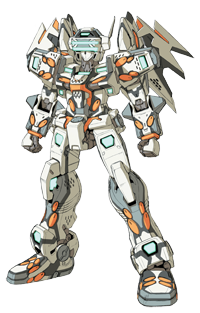 I first played Virtual On years ago now, originally on the Saturn port in fact. I look back at that with some disdain admittedly, as I later but quickly realised that the arcade original, with its wondrous twinstick control setup, was a far superior game. The arcade version took me a few months of practice to get into, mainly because the nearest arcade was an hour’s train ride away and I was still at the tender age that meant I didn’t have a driving license.
I first played Virtual On years ago now, originally on the Saturn port in fact. I look back at that with some disdain admittedly, as I later but quickly realised that the arcade original, with its wondrous twinstick control setup, was a far superior game. The arcade version took me a few months of practice to get into, mainly because the nearest arcade was an hour’s train ride away and I was still at the tender age that meant I didn’t have a driving license.
Once I’d learnt the basics I decided to create a club in a fairly central London arcade (London being in the UK, in case you’re wondering). It was imaginatively titled the London Virtual On Club, or LonVOC for short.
It then appeared that my practice had been pretty thorough, as my subsequent skills were rather potent against the new club members (all of whom were keen to best me, but in the non-Xbox Live smacktalk sense). We were also later graced with the only arcade cabinet of Virtual On Oratorio Tangram (M.S.B.S. 5.2) in the UK, which was a lot of fun.
Considering the recent announcement of Oratorio Tangram coming to digital download, it seems only fair to cover a series that made me travel halfway across my native country just to plumb credits into an arcade cabinet (a cabinet I later ended up owning, as you probably know already).



Posted on : 07-09-2009 | By : Cacophanus | In : Features
 Here’s a low-down of a rather wonderful Japanese games developer by the name of Sandlot. Officially formed in March of 2001, they approached the genre of mecha gaming with quite literally a new perspective.
Here’s a low-down of a rather wonderful Japanese games developer by the name of Sandlot. Officially formed in March of 2001, they approached the genre of mecha gaming with quite literally a new perspective.
In 1953 a budding manga artist, by the name of Mitsuteru Yokoyama, penned a series that would be responsible for laying the foundations of a pop-cultural phenomenon that has now lasted over half a century. The series involved a young boy remote controlling a giant robot by the name of Tetsujin 28-go (translated as Iron Man 28 and released abroad as Gigantor). This focus of the boy controlling a huge mecha from ground level was clearly an inspirational one in the case of Sandlot’s genesis.
For almost all but one of Sandlot’s games they have a very similar gameplay implementation in regards to the player viewpoint, that of a boy on the ground looking up at an immense mechanical behemoth (or at the very least a discernable sense of scale to the gaming proceedings).
It’s also interesting to note that this mechanical inspiration has consequently spawned a more successful series of games.
More after the jump:



Posted on : 07-09-2009 | By : Cacophanus | In : Reviews
Posted on : 06-09-2009 | By : Cacophanus | In : Reviews
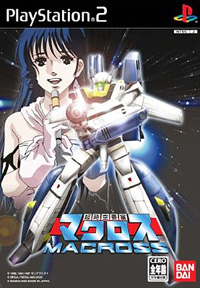 There are particular anime heirlooms that require a certain type of respect and admiration, especially when licensed merchandising invariably raises its head. Choujikyuu Yosai Macross is such an heirloom. Originally aired in 1982 as a 36 episode TV series, then as an adapted movie in 1984, Studio Nue’s epic-yet-human space opera is greatly revered.
There are particular anime heirlooms that require a certain type of respect and admiration, especially when licensed merchandising invariably raises its head. Choujikyuu Yosai Macross is such an heirloom. Originally aired in 1982 as a 36 episode TV series, then as an adapted movie in 1984, Studio Nue’s epic-yet-human space opera is greatly revered.
It also marked the creative debut of one Shouji Kawamori: a then meek mecha designer, he penned the timeless design of the VF-1 “Valkyrie”. Timeless in the way it looked like a contemporary F-14 fighter jet but also seamlessly transformed into a giant mecha to combat equally giant aliens out to destroy the human race. Unsurprisingly, there have been many Macross videogames over the 20-year period since Macross was created. Many have been utterly dire. A select few haven’t.
Normally, the mere mention of SEGA-AM2 indicates a project of austere quality, after all AM2 truly have an enviable gaming portfolio. Bandai realised this state of affairs after releasing the (pretty poor) Macross Digital Mission VF-X games developed by UNiT, not to mention the shocking Macross Plus Game Edition and Macross M3 created by Shoeisha, and they thankfully commissioned AM2 to make matters right.



Posted on : 06-09-2009 | By : Cacophanus | In : Reviews
Posted on : 06-09-2009 | By : Cacophanus | In : Reviews
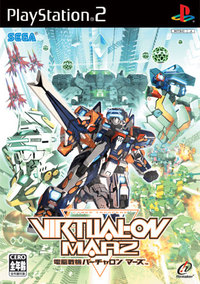 Virtual On is oft-misunderstood as a series. The majority of people focus on the presence of big robots, rather than the game mechanics, that the franchise offers. Moreover, the game’s control interface, through that of a pair of TwinSticks, has caused consternation amongst many a gamer due to their apparent lack of inclusivity: players new to the title struggle with the steep learning curve these devices create, not forgetting to mention that the majority of people remain utterly baffled as to the game’s actual content, and how to manoeuvre within the game world.
Virtual On is oft-misunderstood as a series. The majority of people focus on the presence of big robots, rather than the game mechanics, that the franchise offers. Moreover, the game’s control interface, through that of a pair of TwinSticks, has caused consternation amongst many a gamer due to their apparent lack of inclusivity: players new to the title struggle with the steep learning curve these devices create, not forgetting to mention that the majority of people remain utterly baffled as to the game’s actual content, and how to manoeuvre within the game world.
Arcade games require practice, patience and training on the part of the player. Virtual On has a brutal learning curve, but the thoroughness of thought and skill that is expected from the player only helps to enrich the overall experience. Thing is, this could be said for any arcade game, and is very much a tenet of design within this part of the games industry.



Posted on : 06-09-2009 | By : Cacophanus | In : Reviews
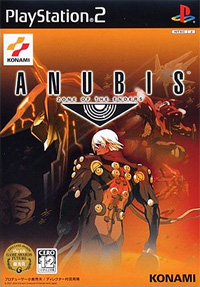 Set a few years after the first incarnation, the game starts with the player being re-introduced to the mechanical avatar of Egyptian death, Jehuty. Along with it’s new virile pilot, Dingo Egret. What follows is a truly impressive and epic narrative, after all the first game wasn’t the only part of the saga. Admittedly, the plucky little hero from the first game game, Leo Steinbuck, makes an appearance, but the overall narrative tone is far more mature and developed now. There has even been an animated movie and TV series too. Unfortunately, there is just too much focus on the narrative, to the point where it detracts from the overall game.
Set a few years after the first incarnation, the game starts with the player being re-introduced to the mechanical avatar of Egyptian death, Jehuty. Along with it’s new virile pilot, Dingo Egret. What follows is a truly impressive and epic narrative, after all the first game wasn’t the only part of the saga. Admittedly, the plucky little hero from the first game game, Leo Steinbuck, makes an appearance, but the overall narrative tone is far more mature and developed now. There has even been an animated movie and TV series too. Unfortunately, there is just too much focus on the narrative, to the point where it detracts from the overall game.
The actual game itself has been improved noticeably, Jehuty can do a lot more now. The old grab function, with its new implementation, adds a lot of spice to regular combat, but some of the boss fights fall foul of this new function to the point of gimmickry. As such, in many of the numerous boss fights the player has to grab an object and use it as a “guard” against an ensuing attack. So instead of gauging the combat mechanic in a gradual process, we have to endure lengthy boss encounters where we cannot directly attack our foe. Admittedly it is a useful and innovative function, but over used.



Posted on : 06-09-2009 | By : Cacophanus | In : Reviews
Posted on : 06-09-2009 | By : Cacophanus | In : Reviews
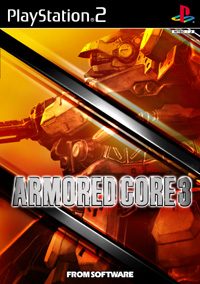 Forcing balance can be a tricky thing with game design, especially when it comes to sequels. If you have already set a precedent on acquiring ever more powerful weapons in a game franchise, to deny that in a sequel would (most probably) irritate the hell out of your customers. In this particular case, From Software got it right.
Forcing balance can be a tricky thing with game design, especially when it comes to sequels. If you have already set a precedent on acquiring ever more powerful weapons in a game franchise, to deny that in a sequel would (most probably) irritate the hell out of your customers. In this particular case, From Software got it right.
Set in a post-apocalyptic future, where mankind has retreated to the sanctuary of underground cities, humanity is still in the throws of petty corporate warfare. Disregarding the possibility of human extinction, the corporate schmucks decide to speed up the carnage by hiring mercenaries. This is where you come in. Your ride of choice is a fully customisable mechanical monstrosity, an avatar of destruction if you will. You goal is to take on missions and proceed to earn cash to buy more parts that can kill things quicker. In short, it is great cathartic fun.
The big changes in Armored Core 3 are several fold. The first big change is that the game is now four player. Matches can either be free for all or team based. When team based, the first side to destroy the opponent’s “Leader” wins. A system not all that different from Hitmaker’s (rather disappointing) Virtual On Force. In the missions part of the game this follows on somewhat. On some missions you are allowed to hire “consorts” to help you out, this can be extremely helpful on some missions.



Posted on : 06-09-2009 | By : Cacophanus | In : Features
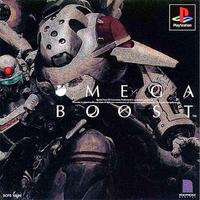 In 1999 a developer renowned for its pedigree in creating driving simulators ventured into pastures where high speed mecha roam. The developer was Polyphony Digital, the game: Omega Boost for the original PlayStation.
In 1999 a developer renowned for its pedigree in creating driving simulators ventured into pastures where high speed mecha roam. The developer was Polyphony Digital, the game: Omega Boost for the original PlayStation.
It was possibly the most accomplished implementation of mecha themed space combat yet achieved.
The player had control over the titular mecha, the Omega Boost, and were able to acquire targets in spherical 3D at incredible speed. Considering the aesthetic influences from anime such as Macross, it was unsurprising that Shoji Kawamori helmed the mecha design with his regular finesse.
Many assumed that the game was an offshoot from Team Andromeda’s seminal Panzer Dragoon series, as the beautifully insane homing lasers were in similar effect. It became an almost apocryphal tale, that was supposedly wholly without credence.
Well, Yuji Yasuhara would probably disagree…



 I first played Virtual On years ago now, originally on the Saturn port in fact. I look back at that with some disdain admittedly, as I later but quickly realised that the arcade original, with its wondrous twinstick control setup, was a far superior game. The arcade version took me a few months of practice to get into, mainly because the nearest arcade was an hour’s train ride away and I was still at the tender age that meant I didn’t have a driving license.
I first played Virtual On years ago now, originally on the Saturn port in fact. I look back at that with some disdain admittedly, as I later but quickly realised that the arcade original, with its wondrous twinstick control setup, was a far superior game. The arcade version took me a few months of practice to get into, mainly because the nearest arcade was an hour’s train ride away and I was still at the tender age that meant I didn’t have a driving license.
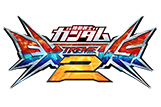

 Here’s a low-down of a rather wonderful Japanese games developer by the name of
Here’s a low-down of a rather wonderful Japanese games developer by the name of 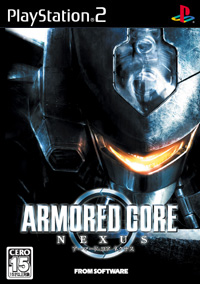 How can anyone explain the satisfaction of creating a beautifully balanced mechanical avatar, taking it into the thick of combat and yet returning from the battlefield unscathed? Bathing in your freshly acquired and truly magnificent skill, you watch as charred wreckage surrounds your astounding creation. Gaming empowerment doesn’t really come any better than this.
How can anyone explain the satisfaction of creating a beautifully balanced mechanical avatar, taking it into the thick of combat and yet returning from the battlefield unscathed? Bathing in your freshly acquired and truly magnificent skill, you watch as charred wreckage surrounds your astounding creation. Gaming empowerment doesn’t really come any better than this. There are particular anime heirlooms that require a certain type of respect and admiration, especially when licensed merchandising invariably raises its head. Choujikyuu Yosai Macross is such an heirloom. Originally aired in 1982 as a 36 episode TV series, then as an adapted movie in 1984, Studio Nue’s epic-yet-human space opera is greatly revered.
There are particular anime heirlooms that require a certain type of respect and admiration, especially when licensed merchandising invariably raises its head. Choujikyuu Yosai Macross is such an heirloom. Originally aired in 1982 as a 36 episode TV series, then as an adapted movie in 1984, Studio Nue’s epic-yet-human space opera is greatly revered.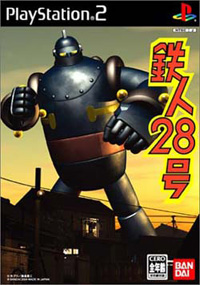 In 1956, a certain Mitsuteru Yokoyama penned a manga by the name of “Tetsujin 28-go”. This manga portrayed the life of a young boy called Shotaro Haneda, remote controlling a huge military robot called Tetsujin 28-go to thwart the forces of evil and do good in the world. It wasn’t very long before this manga made the transition to anime, and then jumped the Pacific Ocean to mesmerise the US populace (under the new name of “Gigantor”). It’s important to clarify one thing from the start: Mitsuteru Yokoyama’s “Tetsujin 28-go” was single-handedly responsible for the creation of Japanese mecha pop-culture. His work has inspired generations of people. Some of these people happen to work at a Japanese developer called Sandlot.
In 1956, a certain Mitsuteru Yokoyama penned a manga by the name of “Tetsujin 28-go”. This manga portrayed the life of a young boy called Shotaro Haneda, remote controlling a huge military robot called Tetsujin 28-go to thwart the forces of evil and do good in the world. It wasn’t very long before this manga made the transition to anime, and then jumped the Pacific Ocean to mesmerise the US populace (under the new name of “Gigantor”). It’s important to clarify one thing from the start: Mitsuteru Yokoyama’s “Tetsujin 28-go” was single-handedly responsible for the creation of Japanese mecha pop-culture. His work has inspired generations of people. Some of these people happen to work at a Japanese developer called Sandlot. Virtual On is oft-misunderstood as a series. The majority of people focus on the presence of big robots, rather than the game mechanics, that the franchise offers. Moreover, the game’s control interface, through that of a pair of TwinSticks, has caused consternation amongst many a gamer due to their apparent lack of inclusivity: players new to the title struggle with the steep learning curve these devices create, not forgetting to mention that the majority of people remain utterly baffled as to the game’s actual content, and how to manoeuvre within the game world.
Virtual On is oft-misunderstood as a series. The majority of people focus on the presence of big robots, rather than the game mechanics, that the franchise offers. Moreover, the game’s control interface, through that of a pair of TwinSticks, has caused consternation amongst many a gamer due to their apparent lack of inclusivity: players new to the title struggle with the steep learning curve these devices create, not forgetting to mention that the majority of people remain utterly baffled as to the game’s actual content, and how to manoeuvre within the game world. Set a few years after the first incarnation, the game starts with the player being re-introduced to the mechanical avatar of Egyptian death, Jehuty. Along with it’s new virile pilot, Dingo Egret. What follows is a truly impressive and epic narrative, after all the first game wasn’t the only part of the saga. Admittedly, the plucky little hero from the first game game, Leo Steinbuck, makes an appearance, but the overall narrative tone is far more mature and developed now. There has even been an animated movie and TV series too. Unfortunately, there is just too much focus on the narrative, to the point where it detracts from the overall game.
Set a few years after the first incarnation, the game starts with the player being re-introduced to the mechanical avatar of Egyptian death, Jehuty. Along with it’s new virile pilot, Dingo Egret. What follows is a truly impressive and epic narrative, after all the first game wasn’t the only part of the saga. Admittedly, the plucky little hero from the first game game, Leo Steinbuck, makes an appearance, but the overall narrative tone is far more mature and developed now. There has even been an animated movie and TV series too. Unfortunately, there is just too much focus on the narrative, to the point where it detracts from the overall game.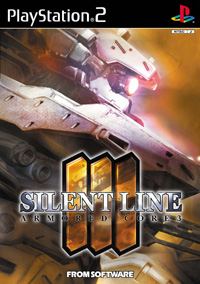 Armored Core 3: Silent Line is the seventh game in the franchise. For the more cynical of you copious eye rolling is not to be unexpected. It is, however, utterly without valediction. Silent Line is an utterly superb game.
Armored Core 3: Silent Line is the seventh game in the franchise. For the more cynical of you copious eye rolling is not to be unexpected. It is, however, utterly without valediction. Silent Line is an utterly superb game. Forcing balance can be a tricky thing with game design, especially when it comes to sequels. If you have already set a precedent on acquiring ever more powerful weapons in a game franchise, to deny that in a sequel would (most probably) irritate the hell out of your customers. In this particular case, From Software got it right.
Forcing balance can be a tricky thing with game design, especially when it comes to sequels. If you have already set a precedent on acquiring ever more powerful weapons in a game franchise, to deny that in a sequel would (most probably) irritate the hell out of your customers. In this particular case, From Software got it right.







